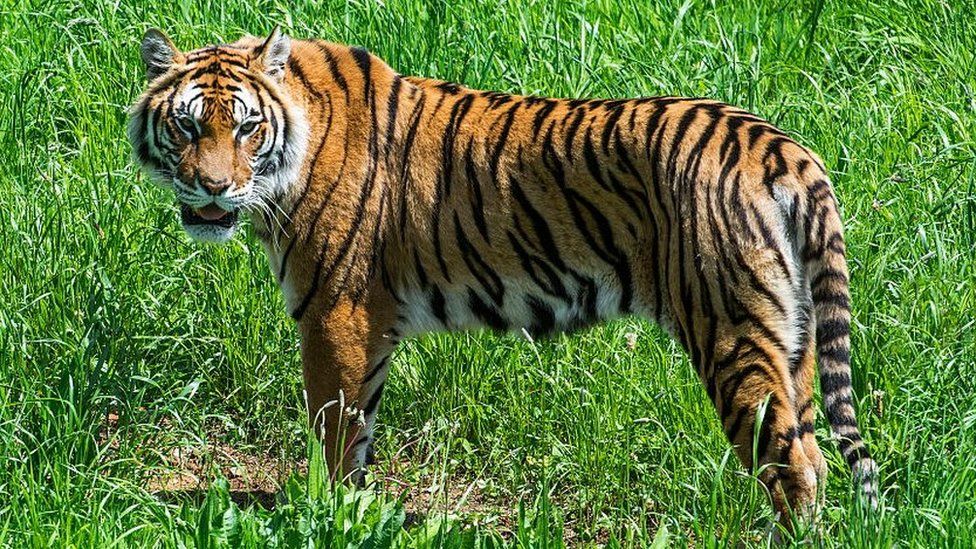Bhutan has reported a marked increase in its wild tiger population, according to the results of a new survey.
The latest figures show the tiny Himalayan kingdom is now home to 131 tigers – up 27% from the last count, held in 2015.
Experts also found evidence of Tigers breeding at different altitudes in the country, suggesting Bhutan could help regional populations recover.
The study covered 32,800 sq km (12,664 sq miles) – roughly 85% of the country.
It was carried out by the Bhutanese government’s forest and park services department, with the help of various national and international environmental groups, including the World Wildlife Fund (WWF).
The news has been welcomed as the world continues to grapple with the increasing loss of species due to issues such as climate change..
“This is a significant achievement and an indication of a very healthy ecosystem,” said Chimi Rinzin, Country Director of WWF-Bhutan.
As a top predator, tigers are considered essential for preserving the complex systems that underpin the natural world.
However, they are an endangered species. According to WWF statistics, the global wild tiger population has dropped by around 95% over the past century.
This is due to issues such as a loss of habitat due to human habitation and climate change, as well as illegal wildlife trade.
- What is biodiversity and how are we protecting it?
The results of the latest Bhutan survey means the country joins a small number of nations that have increased their tiger population in the past decade.
That includes India, who earlier this year reported an increase of 200 tigers in the past four years.
Nepal has also made significant strides, doubling its tiger population in the past decade.
- India tiger census shows steady population growth
- Tigers are back from the brink and attacks are increasing
However, there have been concerns about the growth in tiger attacks in areas where conservation efforts are taking place.
“As tiger numbers increase, challenges can intensify,” said Stuart Chapman, who leads the WWF’s tiger preservation initiative.
“Yet Bhutan is perfectly positioned to be a global champion for approaches that support coexistence between tigers and people.”
The WWF has credited the development of community-based conservation programs, as well efforts to improve habitats and to address human-wildlife conflict management, as some of the reasons behind the rise in Bhutan’s tiger population.
The results of the survey were released on Saturday to coincide with Global Tiger Day, an annual event that aims to raise awareness about the risks to the species.
Related Topics
- Tiger conservation
- Tigers
- Wildlife conservation
